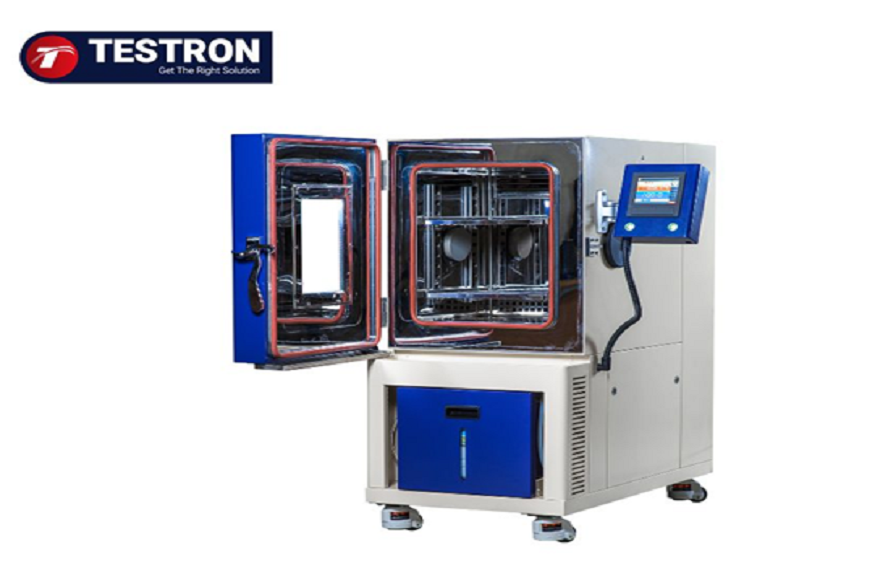Environmental test chambers have long been an essential instrument for researchers and producers in most industries. These chambers simulate several commonly encountered and often harsh environmental situations to test the robustness, dependability, and functionality of products in such environments. Older test chamber manufacturers have met the needs of the time, and increasing demands of both technology and product specifications, by adding cutting-edge features and capabilities to their Advanced environmental test chambers.
Optimized Automation and Control Systems:
Remote monitoring and control features are also being integrated by manufacturers, enabling operators to oversee tests from any location in the globe. Since recent worldwide events have made distant work arrangements necessary, this capability has become very valuable. Further improving these chambers’ predictive maintenance capabilities, lowering downtime, and prolonging equipment lifespan is the incorporation of AI and machine learning algorithms.
Enhanced Energy-Saving:
As part of global initiatives to lessen their influence on the environment, some manufacturers are investigating the use of alternative refrigerants with reduced potential for global warming. Moreover, energy recovery devices are being incorporated into contemporary test chambers to enable the collection and subsequent utilization of surplus heat produced throughout testing procedures.
Additionally, it’s becoming increasingly typical to have multi-factor testing capabilities. Many environmental stresses, including temperature, humidity, vibration, and UV radiation, can be replicated simultaneously in modern chambers. As a result, testing scenarios may be made more thorough and realistic, offering insightful information about how well a product performs in challenging real-world settings.
Designs That Are Modular and Adaptable:
As testing requirements and industry needs change, manufacturers of aging test chambers are shifting their designs to become more adaptable and modular. By adding or deleting elements as needed, these adaptable systems let users customize chambers to meet their unique requirements.
Because separate parts may be updated or changed without having to completely rebuild the system, modular designs also make maintenance and upgrades easier to do. Investing in testing equipment is future-proofed using this method, which also saves costs.
Blending Data Analytics with Advanced Sensors:
The incorporation of smart sensors and data analytics capabilities has led to tremendous innovation with modern environmental test chambers. High-precision sensors measure temperature, humidity, gas concentrations, and particle levels among other characteristics.
These sensors and the use of advanced data analytic tools will enable users to gain previously unattainable insights into the procedures of testing. Since one can visualize real time data, analyze trends, and have predictive modeling capabilities and identify potential problems before they become serious.
Better Material Congruence:
The makers of aging test chambers are modifying their designs to guarantee compatibility when new materials and composites hit the market. These days, sophisticated chambers have interiors that resist corrosion and parts that can survive contact with harsh substances and materials.
Particularly in sectors like aerospace, automotive, and chemical manufacture where unusual materials are becoming more and more prevalent, this invention increases the longevity of the testing apparatus and opens up a wider range of testing applications.
More Even Temperature and Better Airflow:
Exact and reproducible results depend on consistent conditions being reached throughout the testing area. Innovative airflow designs and sophisticated temperature control systems are being employed by aging test chamber manufacturers to improve chamber homogeneity.
Depending on where in the chamber the test specimen is placed, some manufacturers are using computational fluid dynamics (CFD) modeling to optimize airflow patterns and guarantee constant conditions. For businesses like electronics and medicines that must adhere to strict regulations, this level of accuracy is especially crucial.
Mitigation of Noise and Management of Vibration:
The demand for reliable and quiet testing conditions has grown as environmental testing grows increasingly complex. The modern chambers that manufacturers are producing now include vibration control systems and noise reduction technologies integrated in.
Enhancing the accuracy of tests that are susceptible to noise or vibrations from the outside world, these technologies also improve working conditions for laboratory personnel. To meet specific needs for acoustic testing, some manufacturers even provide anechoic chamber solutions.
To facilitate a more comprehensive approach to quality assurance, this link allows real-time data sharing across all stages of product development and manufacture. Insights for process optimization and product enhancement can be gained by combining testing data from various chambers or facilities.
Improved Security Functions:
Manufacturers of old test chambers still place a high premium on safety. Modern chambers are equipped with a variety of safety precautions, such as sophisticated fire suppression capabilities and emergency shut-off systems. To improve testing process safety even more, several manufacturers are putting in place AI-driven safety monitoring systems that can identify irregularities and possible risks instantly.
To enhance operator safety and comfort during extended testing cycles, ergonomic designs are also being prioritized. Environmental test chambers of today increasingly come equipped with features like better lighting and maintenance panels that are easier to reach.
Conclusion:
Because of the unstoppable speed of technological innovation and the constant demands of diverse businesses, the field of environmental testing is changing quickly. The leading innovators in this process, advancing constantly to offer more accurate, effective, and adaptable testing solutions, are aging test chamber manufacturers.
More developments in fields like artificial intelligence, materials science, and energy efficiency are anticipated as to look to the future. Vibrant experiences with monitoring and control could soon be possible thanks to the combination of augmented and virtual reality technology. A move toward more environmentally friendly testing procedures and chamber designs may also occur as concerns about sustainability continue to rise.
Aging manufacturers are introducing advancements in advanced environmental test chambers that go beyond little tweaks to something more fundamental: a complete change in the way to do quality assurance and product testing. Innovations like this are allowing industry to create goods that are more dependable, long-lasting, and high-performing while also cutting costs and time-to-market.
The need for sophisticated environmental test chambers will only expand as technological demands on product performance and regulatory constraints tighten. Product development in several industries, including consumer electronics, aircraft, and other sectors, will be significantly shaped by the current advancements in this subject.

